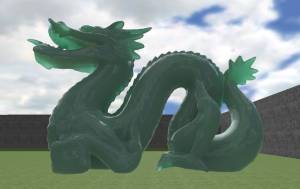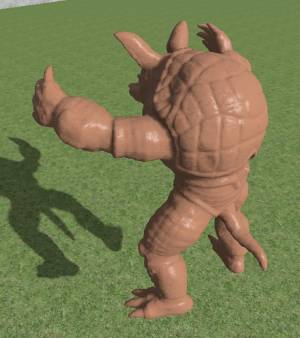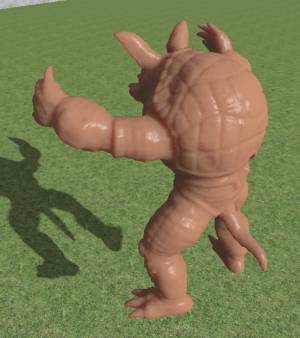This is an old revision of the document!
Table of Contents
~~META: description = Texture property defining the sub surface absorption factor typically used for human skin materials. ~~
Start Page » Game Development with the Drag[en]gine » Skin Texture Properties » Texture Property Database » absorption
Texture Property "absorption"
| Texture Property Name | absorption |
| Description | Defines the sub surface absorption factor. |
| Excepted Data Source | 3 component image |
| Data Range | 0 to 1 |
| Default Value | (0,0,0) |
| Affected Modules | Graphic |
| Linked Properties | absorption.range |
Description
The absorption texture property defines the sub surface absorption factor of a material. Sub surface absorption affects light entering the material after surface based texture properties have taken effect. Sub surface absorption has two main effects. The first is that light is scattered under the surface and exits at a nearby point. This effect gives human skin, way, marble and similar materials their characteristic look. With human skin for example missing the sub surface light scattering the skin looks like plastic and annatural. Due to the sub surface light scattering the skin looks softer and fleshier. The second effect is translucency. Due to the same sub surface absorption effect the light can penetrate the material and exit at the shadow side of the material. The intensity of the light exciting the surface on the other side depends on the thickness of the material and the absorption properties of the material. In both cases the absorption texture property defines the factor of absorption relative to the absorption.range texture property. Splitting the absorption factor out the full range of an 8-bit image can be used to define the absorption even for small or very high values. See absorption.range texture property for the use of the range.
The absorption uses an absorption color instead of a single absorption value. This reflects the property of certain materials to absorpt light of different wavelengths in different quantities. A typical example is human skin where the absorption range of red is highest (1) followed by green (1/3 of red) and blue (1/6 of red). Without this ratio the sub surface absorption and scattering would look wrong. For most materials using the same color for absorption as for color is a good choice. Using an image though with deviating values can be used to simulate veines or bones under the skin altering the way light is absorbed and scattere under the skin. Leaves are a good example where certain parts of the leaf appear darker than others with back-lighting. This can be achieved by pulling colors in the absorption map towards black for selected parts.
The source is typically an image with 3 color component with values 0 to 1.
The default value for this texture property is (0,0,0) which disables sub surface light absorption and scattering.





